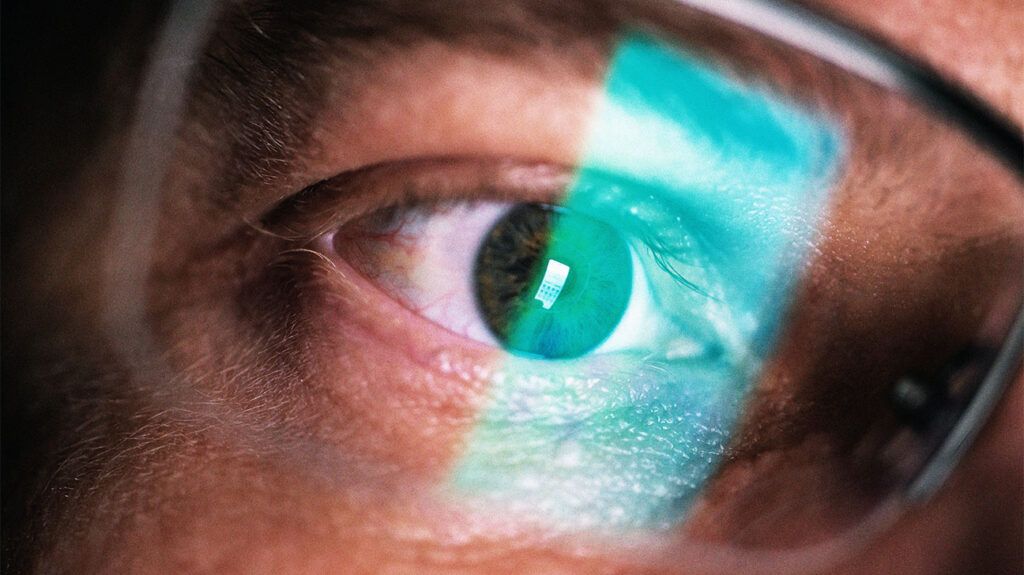Eye experts usually talk about the involvement of both eyes when referring to dry eye, but it is possible for dry eye syndrome to only affect one eye.
One-sided, or unilateral, dry eye can develop after eye surgery, a problem with the nerves or glands in the eye, or another health condition.
If people have dry eye in one eye, they may experience the following symptoms in the affected eye:
- stinging or burning sensation
- blurred vision, particularly when reading
- gritty feeling, or the sensation something is in the eye
- red, irritated eyes
- stringy mucus in or around the eye
- if using contact lenses, a lens may feel painful to wear
- watery eye, or excessive tear production

The cause of dry eye may depend on the type a person has. The two types of dry eye include:
- Evaporative dry eye: This occurs due to problems with the tear film, which increases tear evaporation. A problem with the meibomian glands in the eyelids causes evaporative dry eye and accounts for
over 85% of dry eye cases. - Aqueous deficiency: This occurs due to reduced tear production of the lacrimal glands, which produce tears. It may or may not be linked to Sjogren’s syndrome. A 2022 report detailed a case of dry eye disease in one eye only due to a lack of nerve supply to the lacrimal gland, which supplies tears.
Certain eye conditions may only affect one eye and can cause dry eye, such as entropion or ectropion. Entropion occurs if an eyelid turns inwards, while ectropion is an outward turning of the eyelid.
If people have had eye surgery, it may cause dry eye in that eye. Types of eye surgery that can cause dry eye include refractive eye surgery, such as LASIK.
A corneal abrasion, which is a slight scratch on the surface of the eye,
People may also have dry eye syndrome that affects both eyes, but the symptoms may be more noticeable in one eye compared to the other. Other causes of dry eye can include:
- certain health conditions, such as lupus, rheumatoid arthritis, and thyroid disease
- Sjögren disease, which causes dry eyes and mouth, as well as affecting other parts of the body
- environmental factors, such as wind, dry climate, or smoke
- reduced blinking, such as prolonged periods looking at a screen or reading
- prolonged use of contact lenses
- certain medications, such as antidepressants, beta-blockers, antihistamines, sleeping pills, and anti-anxiety drugs
Treatment for dry eye will depend on the underlying cause. People may be able to treat mild dry eye with over-the-counter (OTC) artificial tears. Using preservative-free eye drops may help to reduce irritation with frequent use.
Other home remedies include applying a warm compress to the eye or massaging the eyelid. If symptoms persist, treatments may include:
- prescription eye drops to increase tear production
- tear duct plugs, which help tears remain in the eyes for longer
- surgery to close the tear ducts permanently
The outlook for dry eyes may depend on the underlying cause. Dry eyes may be temporary if they are caused by environmental factors, such as being around smoke, wind, or in a dry climate. Restoring moisture to the eyes and changing the environment may resolve dry eyes.
Dry eye may be chronic in some cases, though, and people will need to manage the condition long-term. Treatment can help keep the eyes lubricated and healthy and prevent damage to the eyes or vision.
People may be able to treat symptoms of dry eye themselves, such as using OTC eye drops to lubricate the eye or applying a warm compress to the affected eye.
If home treatments are not effective, or if symptoms worsen, contact a doctor. A doctor will carry out a thorough eye exam, which may include:
- checking the structure of the eyelids
- using a bright light and magnifying glass to examine the eyelids and cornea
- measuring the amount and quality of tears and checking for any abnormalities
- checking for any damage to the surface of the eye
If a doctor diagnoses dry eye and the underlying cause, a person can discuss a suitable treatment plan with them.
One-sided dry eye can develop due to a problem with the nerves or glands in the eye or other health conditions. It can also develop due to injury to the cornea or after LASIK eye surgery.
Treatment may depend on the underlying cause. People may be able to treat dry eye at home with OTC artificial tears, warm compresses, and eyelid massage.
If symptoms persist or worsen, people can contact a doctor for a diagnosis. Further treatment may include prescription eye drops, tear duct plugs, or surgery to keep tears in the eye.
